The Tudor Black Bay Fifty-Eight 39mm Face-to-Face with the 41mm Version
Internal competition at Tudor... 41mm vs. 39mm. Vintage vs. even-more-vintage. Which to choose?

As we explained when Tudor introduced its latest vision of a vintage-inspired dive watch, the Black Bay Fifty-Eight 39mm, internal competition is getting stronger than ever… BB41mm or BB58? Tough choice! To shed some light on the situation, we have staged a face-off between the Black Bay 41mm and the Black Bay Fifty-Eight 39mm and arm you with all the details to help you choose between what are, obviously, two great watches.
Background – the Black Bay concept
The Tudor Black Bay was born in 2012, as the second step in Tudor’s revival era – one year after the Heritage Chrono and the same year as the Pelagos – under the Philippe Peverelli/Davide Cerrato management tandem. The Black Bay clearly redefined the brand, repositioned the collection, made the brand sexy again and put it back on the road to success. The Black Bay was – and still is – the brand’s best seller and will remain the milestone of Tudor’s recent history.

The first model was unveiled at Baselworld 2012 with a burgundy bezel. The Black Bay was positioned as a modern-sized but historically-inspired dive watch, with contemporary specifications and vintage design elements. The inspiration can be seen in various 1960s watches, such as the vintage Submariner Ref. 7922, Ref. 7923 and Ref. 7924. With a diameter of 41mm, its case was shaped according to older standards: thin lugs, polished bevel on the side of the case, non-protected oversized crown, aluminium insert for the uni-directional bezel. If the look was clearly vintage, the rest (quality, feel and dimensions) was entirely modern.

The same tenets were applied to the dial. The matte black domed dial featured historical elements with gilt touches (gold-plated hands and indices, as well as gilded inscriptions), a vintage Tudor logo (the rose) and the iconic “Snowflake” hands. This combination of modern and vintage was the main reason for the success of this watch, alongside being an affordable alternative to the too-technical Rolex Submariner, which clearly lacks some vintage appeal (according to some). Inside the case (at that time) was an automatic ETA movement.
Several evolutions are to be noted:
- 2014: the introduction of the midnight-blue bezel, with silver-coloured indices and hands
- 2015: the introduction of the black bezel, with a gilt dial and a red triangle on the bezel
- 2016: the introduction of reference 79230, now with in-house calibre MT5602 (70h power reserve, COSC certification) on all 3 models
In addition to the evolutions listed above, which concern the main line-up, Tudor also played a lot with this collection by introducing a larger 43mm bronze version, a PVD-coated “Dark” edition, a two-tone steel-and-gold variant, a chronograph, a date edition with steel bezel as well as a sub-collection without a diving bezel, first shown in 36mm, later in 41mm and this year in 32mm. So, as you can see, the collection is quite complete! So what is the point of yet another edition, the new Black Bay Fifty-Eight?
The Tudor Black Bay Fifty-Eight 39mm
What is the Tudor Black Bay Fifty-Eight 39mm? If the Black Bay 41mm was a modernised version of a vintage watch, the BB58 is a “vintaged” version of this watch… If you are having trouble following this sentence, this is normal. So give us a chance to make things clearer.
The original Black Bay was a modern take on the vintage Submariner watches. While it relied on some clever visual tricks to make you believe it was a vintage watch, the overall concept was that of a modern watch, with modern proportions and modern quality. The diameter was larger, the case thicker, the bracelet modernly manufactured, the movement (especially the 2nd generation) truly contemporary… however, it also integrated multiple signature elements found on several vintage Submariner watches (Snowflake hands, domed dial, polished bevel on the side of the case, gilt dial, red triangle, riveted bracelet). In short, what we call a “revival watch” – the taste of vintage in a modern package.
This year, Tudor comes with a “vintaged” version of this watch, with a smaller and thinner case, a slightly different movement and a dial/bezel that looks even more “aged” than in the past models. A modern interpretation of a vintage watch, the Black Bay Fifty-Eight now comes closer than ever to the original Submariner watches (from Tudor or Rolex), both in terms of style and proportions.
The main problem is that this watch doesn’t replace the existing 41mm version but comes in addition to the already large collection (comprising over 50 references). If the idea was to create confusion, this couldn’t have been done in a better way. So, face-to-face, how do the BB58 and the 41mm compare?
Face-to-Face: Similarities and Differences
Preliminary note: in order to illustrate the differences and similarities between the Black Bay Fifty-Eight and the standard 41mm model, we relied on a 1st generation version of the 41mm version (ETA-powered, non-riveted bracelet, “smiley” dial). Since 2016, the 41mm version has been updated with a slightly different dial, a riveted bracelet and, of course, Tudor’s manufacture movement. This won’t have a huge influence on this comparison, with the exception that the 2nd generation with an in-house calibre is slightly thicker.
When placed side by side, and at first sight, these two watches look very similar. The overall design of the case is the same and is the overall design of the dial and bezel. However, looking more closely, it’s easy to spot major differences – and even more when you strap both watches on the wrist.
As for the case, the Black Bay Fifty-Eight hasn’t only shrunk in diameter, from 41mm to 39mm, every single part of the watch has been reduced to offer new proportions. While the diameter is reduced by 2mm, the reduction in thickness is even more blatant. The BB41mm with manufacture movement is approximately 15mm in height – clearly not what we could call an ultra-thin, even for a dive watch. This has always been our main complaint about this watch at MONOCHROME. This is further reinforced by the shape of the case itself, with straight casebands that cover the entire thickness of the watch.
With the BB58, Tudor has shaved off no fewer than 3 millimetres, to achieve an overall thickness of 11.9mm – which, in other words, represents a 25% reduction. In addition to that, the case has a slightly different shape, and part of the thickness of the movement is now absorbed by a bubble-like caseback, making the casebands even thinner. The overall sensation on the wrist feels like a return to the original proportions of a vintage Submariner – a watch that always wore thinner than its specifications led you to believe.
To achieve this, Tudor has substituted the movement for the new calibre MT5402. While the calibre MT5602 found in the 41mm measures 31.8mm x 6.5mm, the new movement is now 26mm in diameter and 4.99mm in height. For the rest, the technical base is identical – 70h power reserve, anti-magnetic escapement, COSC-certification.
So reduced diameter, reduced thickness, more compact case dimensions… What else? As we mentioned, every part of the watch has been resized to create harmonious and more vintage proportions, which includes the thickness of the lugs – more tapered, more curved and thinner – as well as the width of the bracelet – previously 22mm and now 20mm.
All in all, this creates the impression of having two different watches on the wrist, with the BB58 being the closest to the original proportions of a vintage Sub. Comfort is, in our opinion, better on the BB58 because the watch feels more balanced. However, keep in mind that it won’t necessarily be the case for all of you. Only a test in a boutique will tell you which one fits you best.
As for the rest of the watch, the only real difference is on the bezel, which now has “gilt” markings – golden inscriptions over a black background. The dial, the hands and the inscriptions have also been resized to match the new diameter of the watch, however, these are simply impossible to notice. And that might be the main issue here. Tudor could have given the BB58 a slightly different personality to help differentiate both references.
Verdict – Which to choose?
The easy answer would be “whichever one you prefer”. However, let me give you a few more thoughts. I would say that everything depends on your taste and, more importantly, on the size of your wrist. For someone like me, with a 17cm wrist, I’d recommend going for the Black Bay 58. It will look more balanced, more elegant and will have more “vintage” impact than the 41mm version – which I own and love.
If you have a solid wrist – let’s say over 19cm – the Black Bay 41mm won’t be a problem… but neither will the BB58. In both cases, it will depend on your taste in watches and your appetite for vintage. I know that some collectors/enthusiasts prefer large, masculine and robust watches, especially when it comes to dive watches. For those, the BB 41mm is a strong candidate.
One last category of potential buyers for the BB58 could well be vintage collectors who’d like to add a modern, solid watch to their collections and have a daily-beater they can rely on. Certainly, they will be pleased by the 58, as it comes really close to what a Submariner was back in the 1960s.
Our best advice is: go and try it on! Nothing beats trying a watch on the wrist. In any case, there’s no bad option, just choices. One thing for sure is that Tudor doesn’t help us make decisions! Sometimes, too many options create confusion – as good as those options might be.

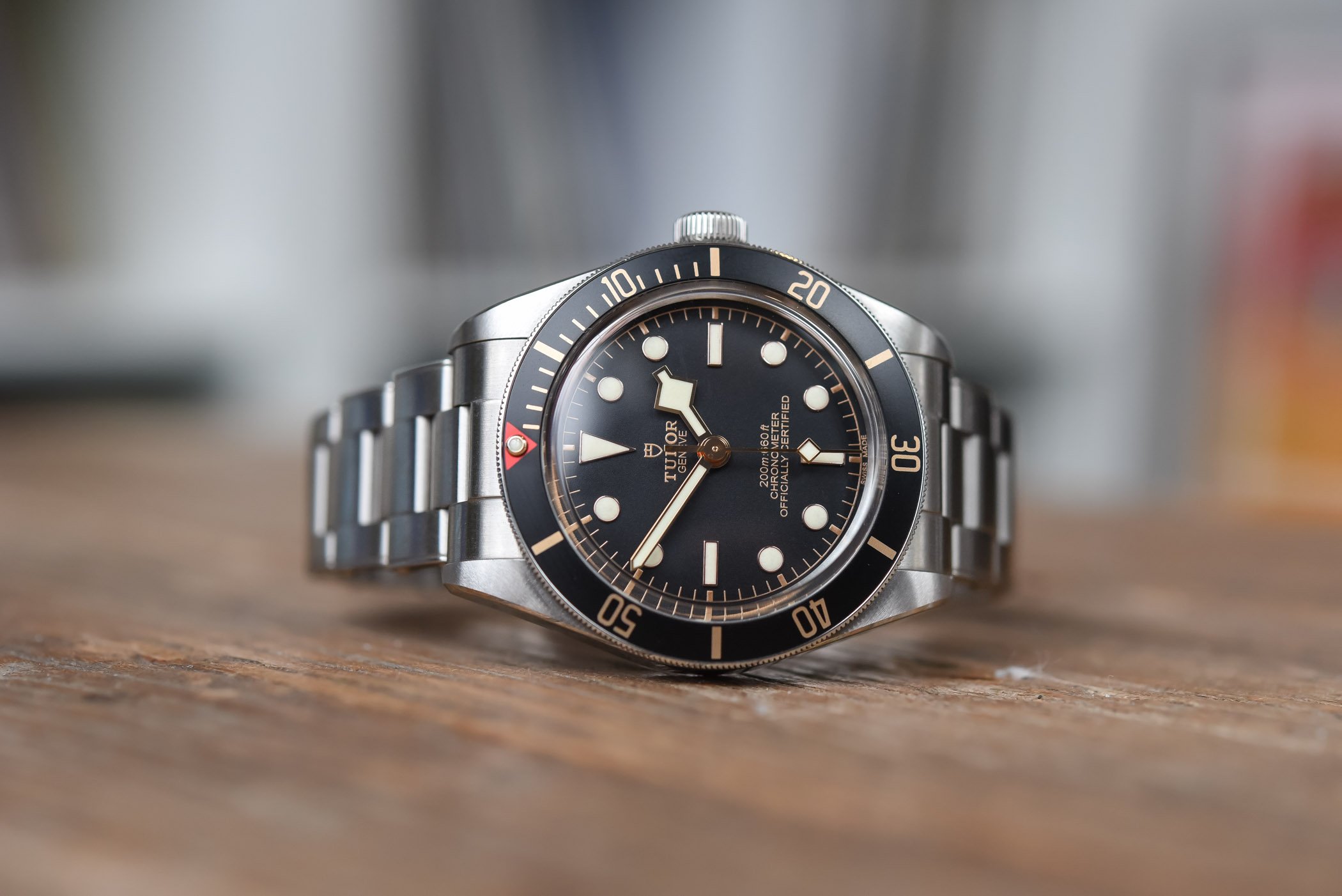
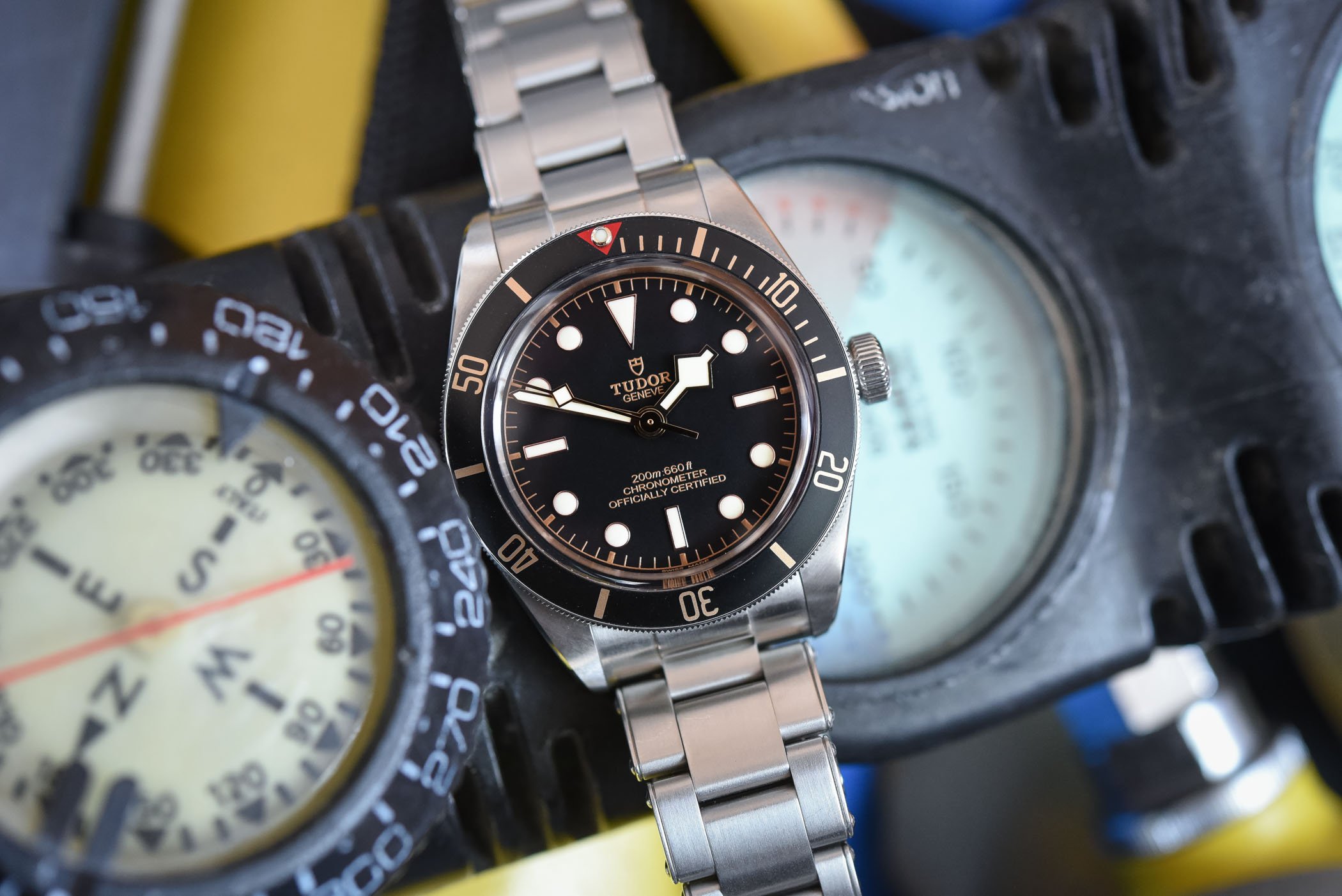

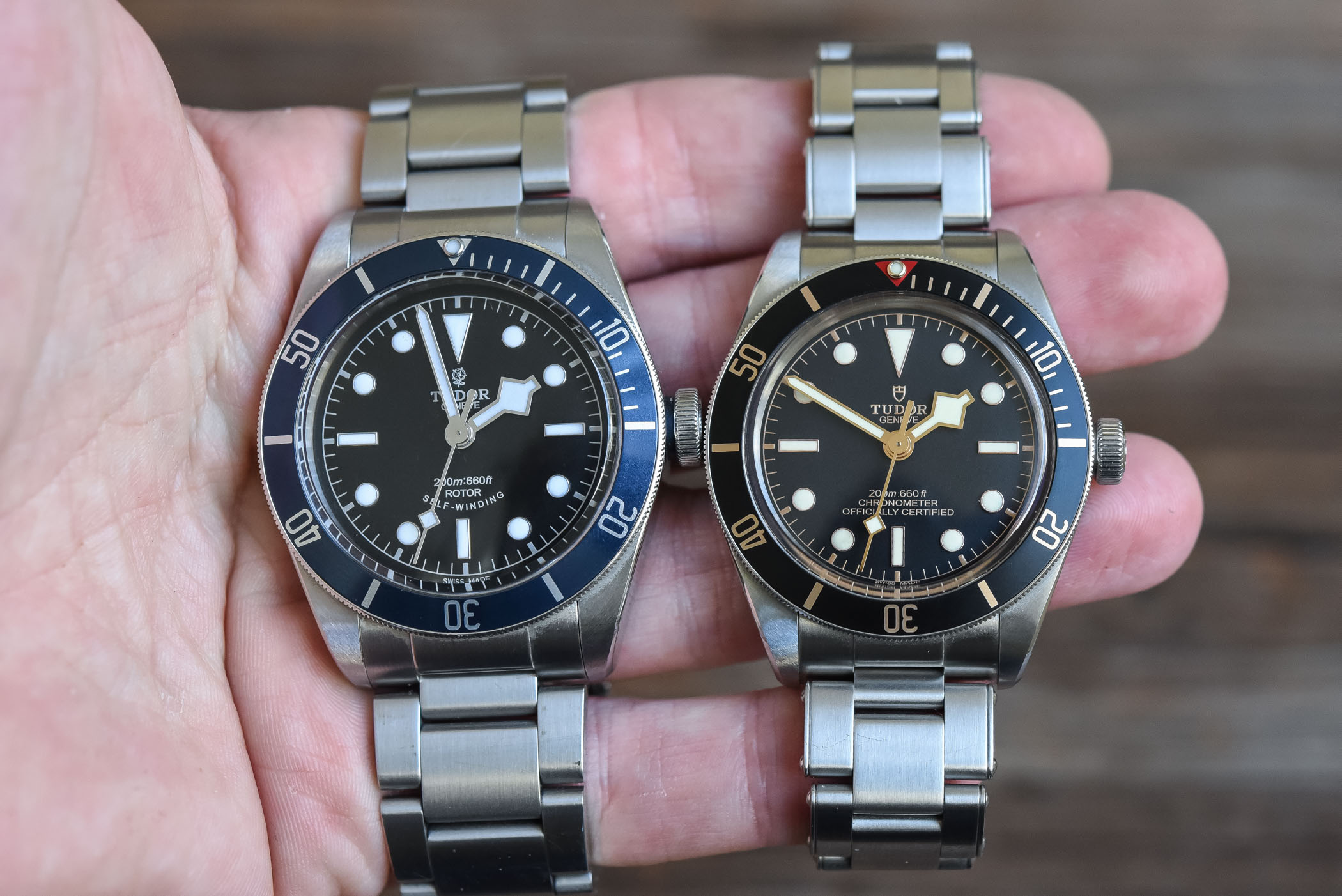

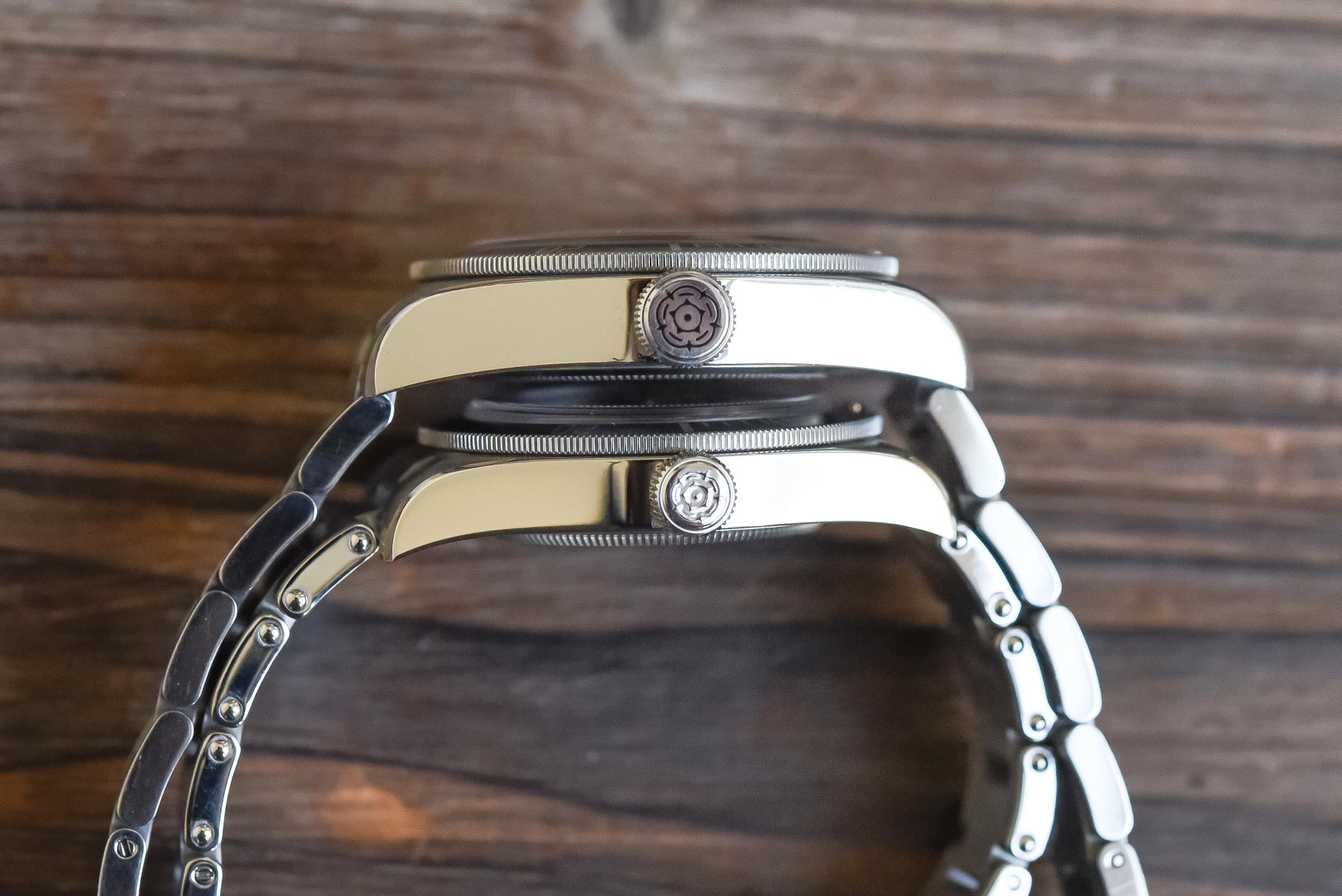
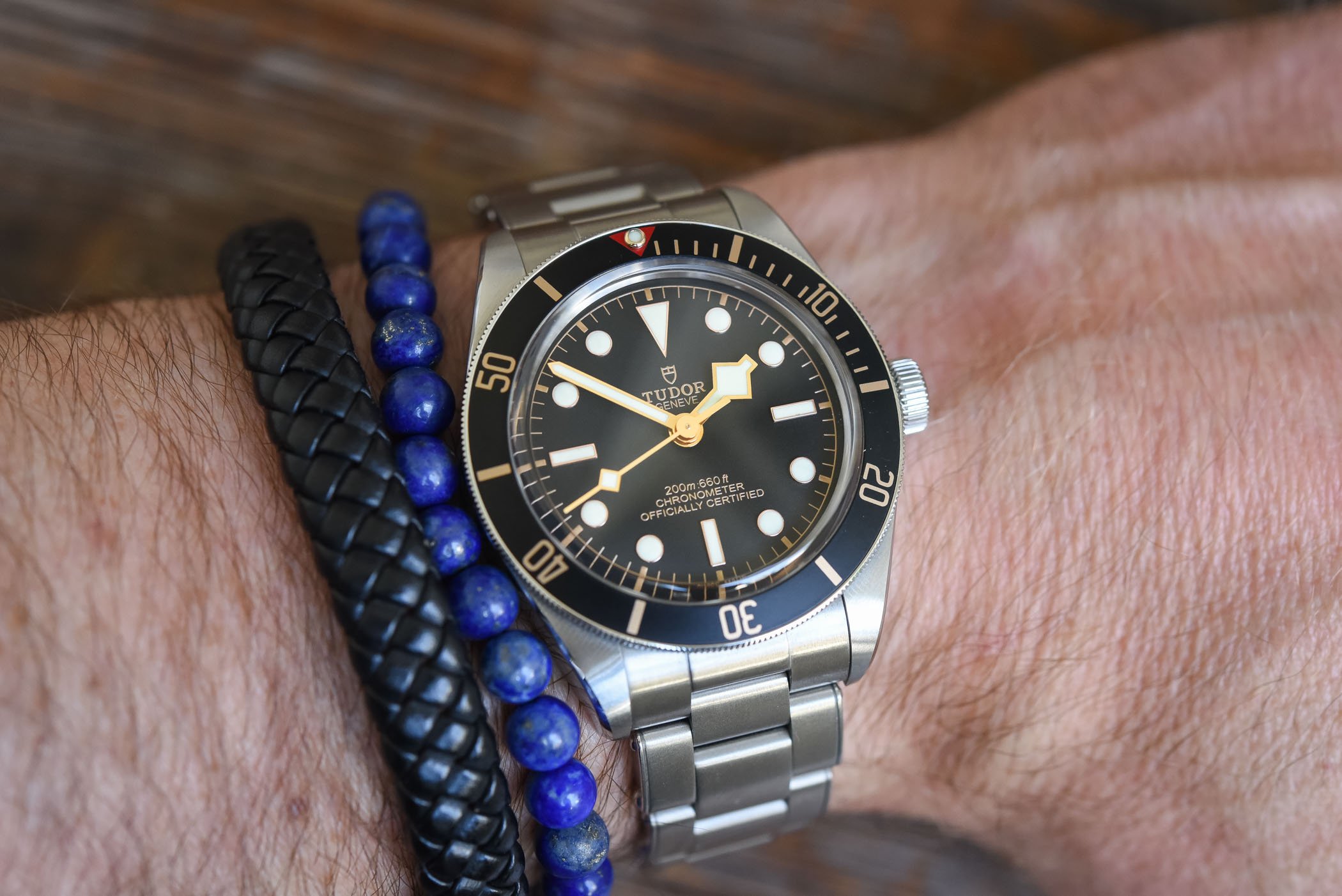
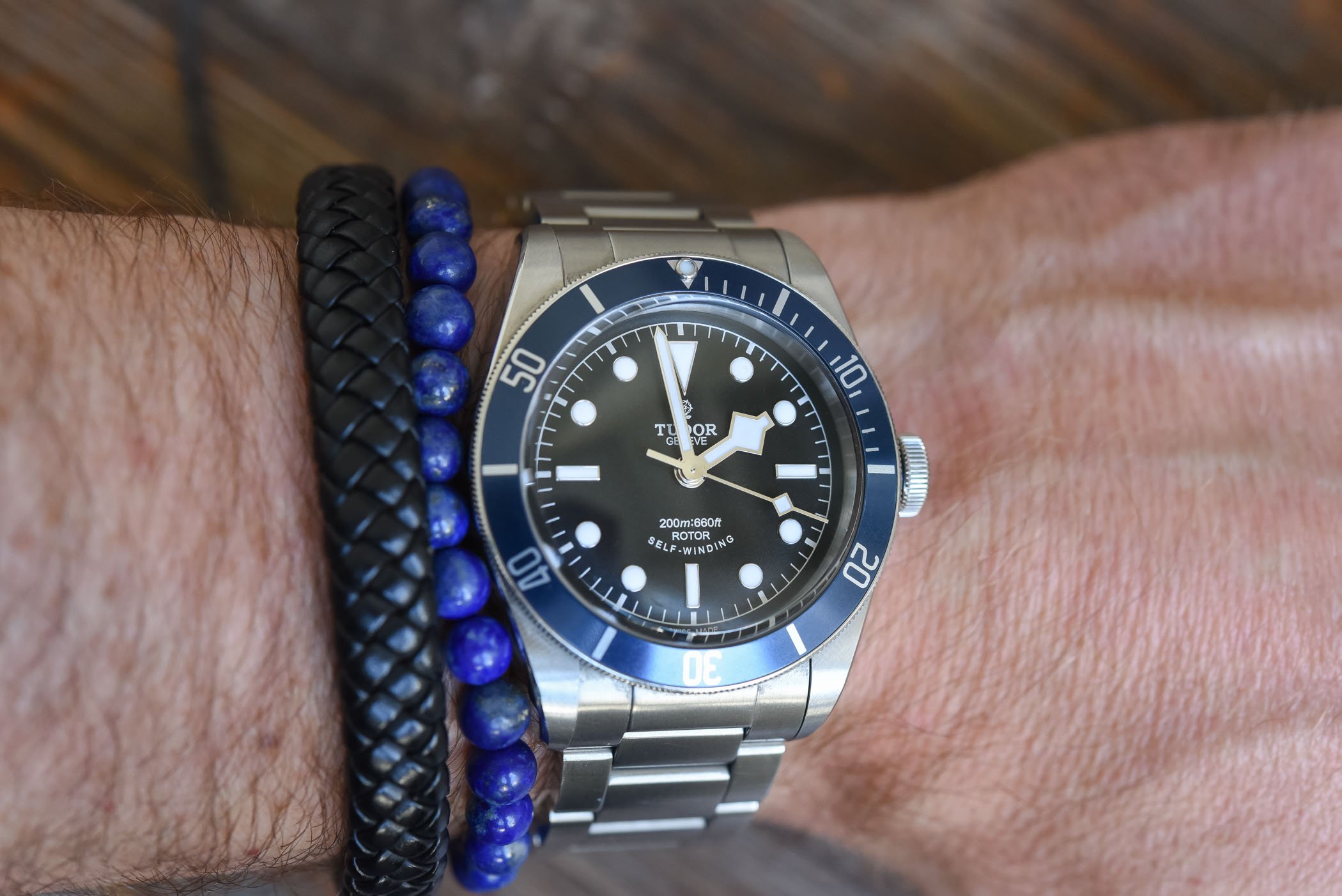

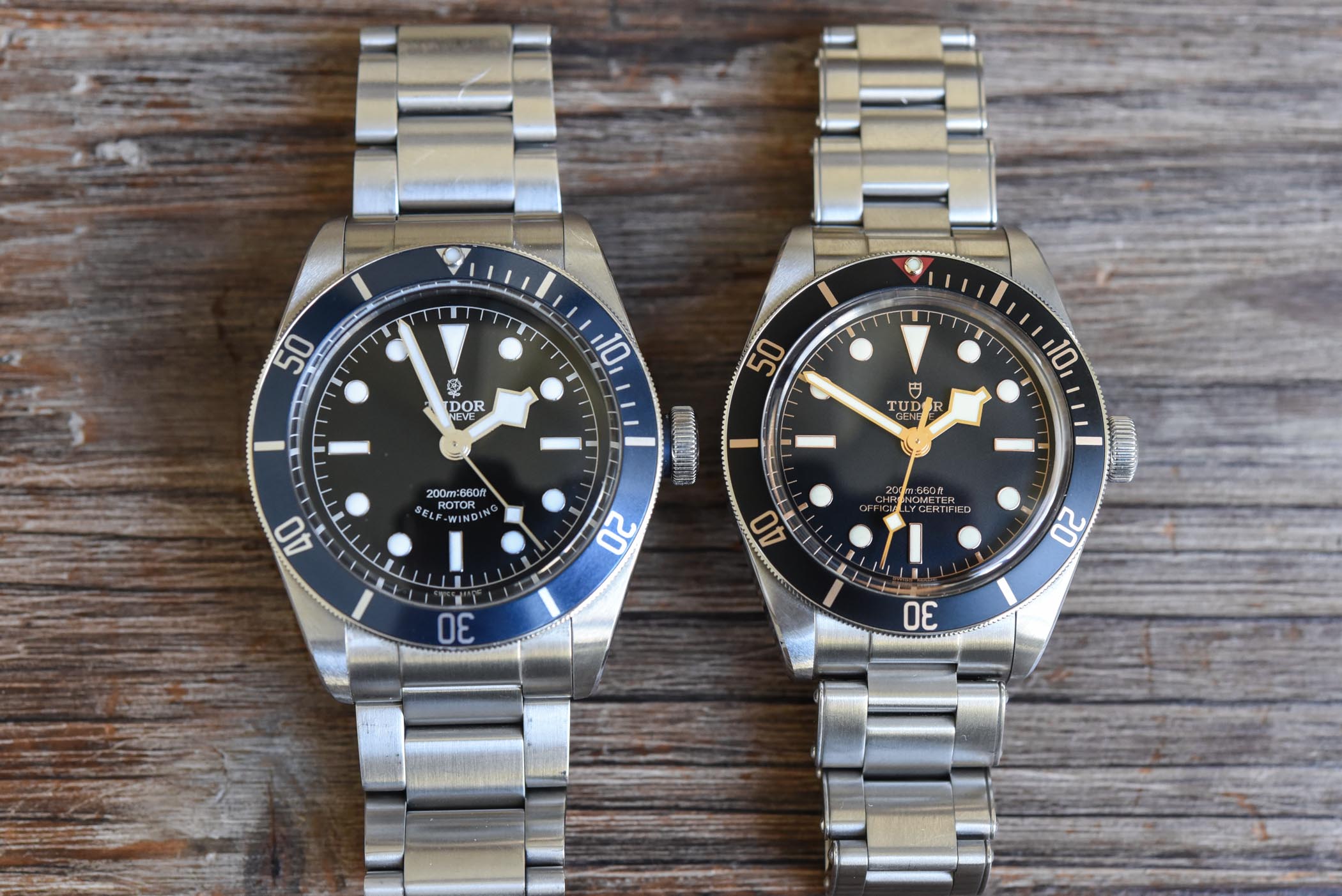
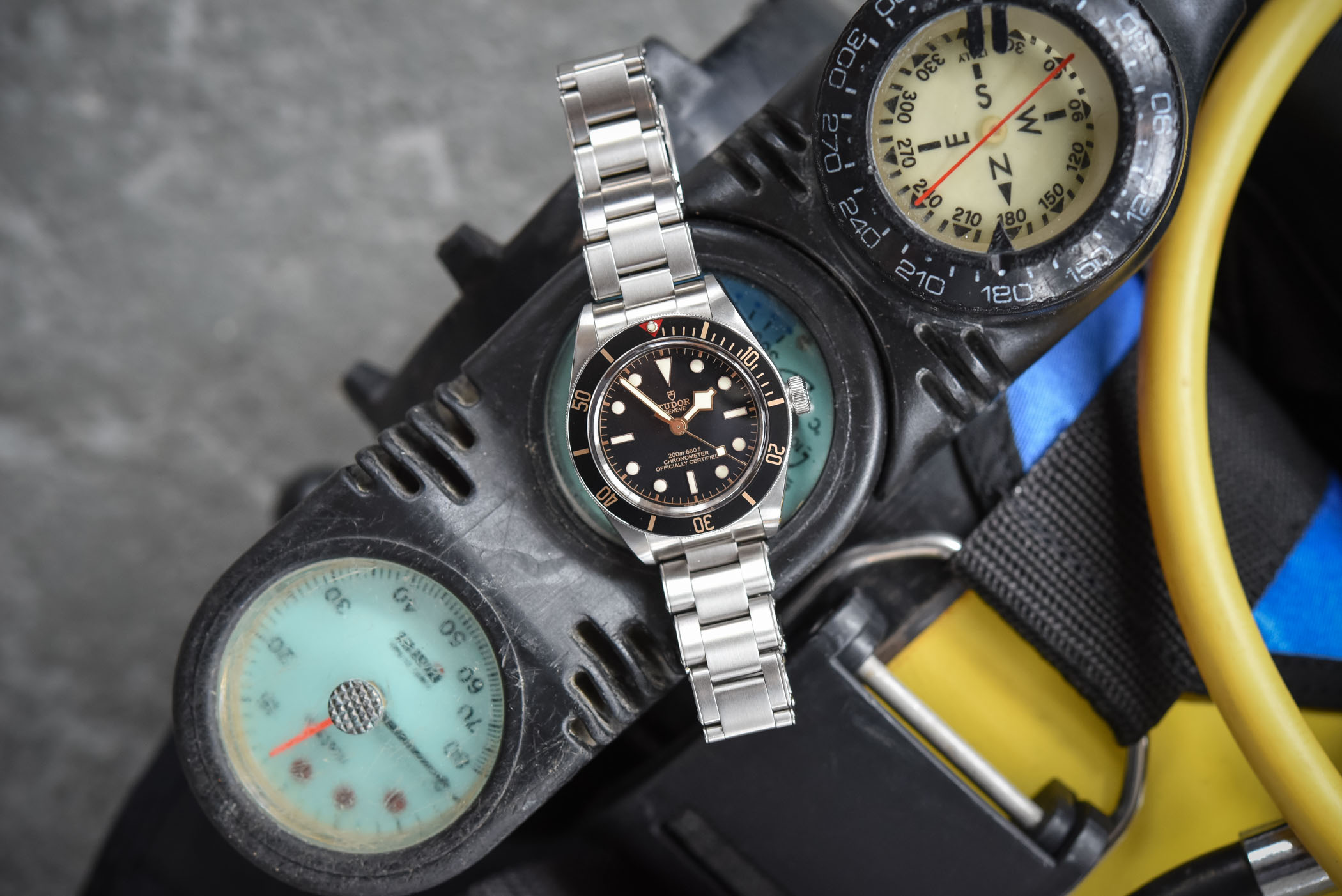



22 responses
With a 21cm wrist, the 41 would probably work best on me. I like that size – seems to be the Goldilocks option for me.
The ETA version of the 41 youre using for this comparison is actually slimmer than the in house versions currently in production so this comparison isn’t telling the whole story.
Show the prices in £GBP. Please.
This is exactly what we say in the article. The ETA Version is indeed slimmer (a few tenths of millimetres)
I was hoping to purchase the BB58 for my birthday in November, I’ll be 60 (1958). I was told in no uncertain terms that I wouldn’t get one until the New Year, at least.
I’m confused by the thickness measurements your article provides. You seem to suggest the 41mm ETA version case is 15mm thick. References I have checked indicate the ETA case is 12.7mm thick compared to the BB58 thickness if 11.9mm. Also, it would have been helpful if you listed the specifications for the 41mm Black Bay along with the BB58 specifications. Other than these two comments, an interesting comparison.
@Bart – I’ve just measured the ETA version and it is approx. 14mm (I have no precision tool with me unfortunately but it is “around” 14mm). The Manufacture movement is slightly thicker, around 15mm.
Waiting for the black/white version of the BB58. Gonna sell all my Seikos for that one! Fingers crossed for Basel ‘19.
I just don’t understand what’s so confusing about two different sizes. Are you confused by the Rolex OP being offered in 26mm, 31mm, 34mm, 36mm and 39mm?
What is the black/white version? Fantastic review by the way
I am much prefer the BB58. But no rose and smiley curve text, I had to choose BBETA instead…
I tried both and, as much as I love 41mm version (especially the ETA one, thinner and with more appropriate dial IMO), I find BB58 a way to go! Not only that it goes better with overall “modern/vintage” aesthetic of Black Bay, but its design simply looks more harmonious when applied to a bit smaller 39mm case. On the other hand, both watches are really nice, though my advice to anyone interested in Black Bays is to first try BB 58 before make any purchase, it doesn’t disappoint at all!
The ’58 is the one to get unless you have either >8″ wrists or have not yet experienced the freedom of smaller watches. I picked up a Rado Captain Cook 37mm on Fri & it looks so right on my 7.5″ wrist I wish the BB58 was 38mm or 37mm. When it comes to keeping it classy, small is better.
I now own two 36mm and one 37mm watches and the most legible watch I have is 36mm. I’m not sure if I would make the leap to a 34mm, but it is amazing how 40mm can seem ungainly after a few days of wearing a 36mm timepiece.
For anyone used to wearing a small clock, who is wondering whether they can “get away” with a 39mm watch without their masculinity being questioned by their favourite gym-going, selfie-taking, hair-product-toting, tattoed barista, just remember what the guys who landed at Omaha Beach were wearing.
You forgot to mention the Harrods green addition 🙂
Can anyone confirm the internal weight winding direction of the MT5402 movement while on the wrist? Some movements naturally wind in either a clockwise others in anticlockwise rotation. Thanks.
I did the same comparison with my Black Bay blue ETA. The ETA wins. The 58 in the flesh with the gilt hands and indices requires more space on the dial and when combined with the black and gold bezel looks a little ‘overcooked’ in my opinion. I have 7.25 inch wrists and when I took of off my BB41 and tried the 58 it literally felt like a ladies diver in comparison.
Colorful Watches with latest designs.
Tony likes the bb58 but the gold adornments are a bit too dainty for Tony. Tony hopes Tudor will get it right next year.
39 or 41 isn’t imo a big difference. Both look great. BUT I would suggest going for the 41mm ETA BLACK bezel. First it looks great and second … it’s only made 6 months or so. Between october 2015 and march 2016 when they replaced it with the inhouse movement. And that’s a nice bonus 🙂
is the 58 a fake or does it only appear that the rose on the crown is so awfully not centered?
Certainly no fake, Christoph, as I bought mine straight at the Tudor (Rolex) HQ in Geneva (and that’s the one in the photos)
Sorry Brice, this is not accurate. My 79220N (41mm ETA version) is 12.8mm thick (I do have a precision instrument), so less than 1mm thicker than the 58, and much thinner than the in-house. It feels even thinner than that because the case back is completely flat. This comparison is interesting, but a little frustrating as it says it will compare the 58 with the ETA, but then does the exact opposite and compares with the in-house.